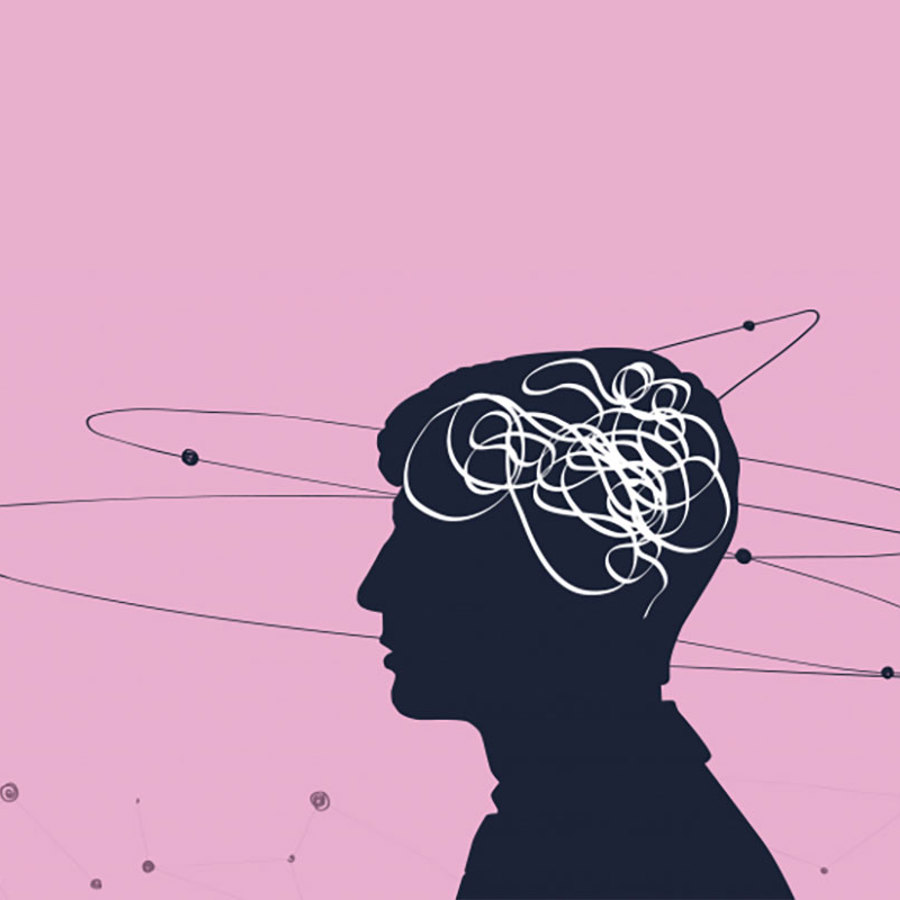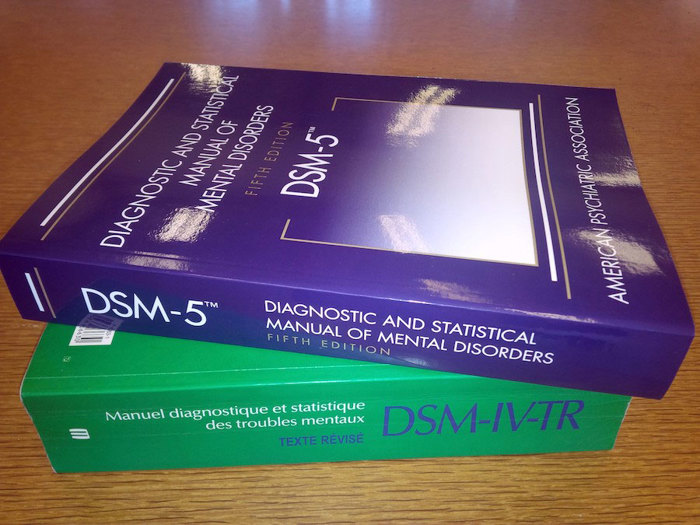
What’s the latest news regarding the inheritance of a sociopath gene?
February 5, 2013

- Related Topics:
- Neurodiversity,
- Complex traits,
- Environmental influence
A curious adult from the U.S. asks:
“I know someone I swear is a sociopath. The author of The Sociopath Next Door claims that 4 of 100 people today are sociopaths. What’s the latest news regarding the inheritance of a sociopathic gene (if I can phrase it that way)?”
First off, let’s start out by saying there is no one “sociopath gene”. There are a bunch of different genes that carry some risk of increasing the chances that someone will be a sociopath. But these genes aren’t enough to explain all cases of sociopathy.
Other factors like the environment come into play too. Geneticists use ‘the environment’ as a catch-all term to talk about things that happen to us while we are in the womb, our family situation growing up and so on. We’ll talk more about the environment later.
Getting back to your question about inheritance though, right now it looks like about half of someone’s risk of becoming a sociopath comes from heritable factors. Some of that risk is linked to the genes we get from our parents.
If you think about all of the behaviors and qualities you would expect a sociopath to have, it shouldn’t be surprising that lots of genes can be involved. Sociopaths (also sometimes called psychopaths) tend to be irresponsible, egocentric, manipulative, impulsive, and antisocial. They tend to lack empathy and guilt. In some cases they also show criminal behavior.

It’s hard to believe that one gene could be responsible for all of these behaviors. And so far, this intuition is supported by scientific findings.
It looks like many different genes can be involved in increasing someone’s risk of becoming a sociopath. More specifically, certain glitches in some of the many genes that are needed for the brain to send signals and work properly can lead to an increased risk for being a sociopath.
Note the “increased risk.” Just having glitches in these genes won’t for sure make you a sociopath. They just make it more likely.
Finding these genes has been tricky for a number of reasons. For starters, there are levels of being a sociopath, and even questions about what a sociopath is.
When many people hear the word sociopath, they may think of someone like Batman’s arch nemesis, the Joker. But what if someone shows less extreme sociopathic behaviors? Are they still sociopathic? As we’ll talk about, this is a big reason it is so hard to find the genes involved.
To further complicate things, most of the studies I’ve seen haven’t been looking only for sociopathy genes. Instead, they’ve looked at people with other known issues and then looked at sociopaths as a group within that larger group. This makes it hard to tease out what exactly is causing sociopathy.
Given all of this you can see why it has been so difficult to figure out what genes are involved in sociopathy. But as you’ll see at the end, geneticists have managed to tease out a few. We don’t have the whole story, but we at least have the introduction.
What is a sociopath anyway?
We should first say that definitions of psychiatric disorders are not set in stone. They can and do change over time. (For some insight into the process of how disorders get classified, click here.)
Diagnosis of a psychiatric disorder also takes time and a good amount of evaluation. As a result, it can be hard to get a large group of people that you can confidently identify as sociopathic. This can make things harder for geneticists. Let’s first talk a bit about why that is.
Think of a classic example of genetics that teachers use to teach how genes are passed on. Something like the red hair gene.
Most red hair can be traced to a single gene. It is also very easy to tell who in a family has red hair. This means it is also easy for geneticists to track how that trait is passed down.
But now let’s come back to our example about sociopathy. What kinds of behaviors would you expect of a sociopath? Well, they might lie a lot. Do people who aren’t sociopaths ever lie? Sure.
So, what else describes a sociopath? They are probably really irresponsible. Does this mean that every irresponsible person is a sociopath? Surely not. You can see that it gets very complicated, very quickly.

If it is difficult to describe the trait that you are looking at, it is going to be difficult to trace down genetic causes for it. You might just stumble on a gene for lying or being irresponsible. It might have nothing to do with being a sociopath!
Despite this (and other problems I won’t go into), geneticists have found some good leads on genes linked to sociopathy. They’ve done this by comparing DNA sequences from people who are thought to be sociopaths with DNA from individuals who are thought to be non-sociopaths.
DNA differences found in one group and not the other are candidates for sociopathy genes. The next section will talk about a few of the genes identified in more detail.
The Brain as a Mail Delivery System
So what kind of genes are we going to be looking for? To understand this, we need to take a step back and talk about what genes are and to think about what sociopathy is at a more basic level.
Each of our genes has the instructions for making or running one small part of us. So there is a gene that controls whether you’ll have red hair or not, one that controls how well your red blood cells carry oxygen, and so on.
Sociopathy happens when someone’s brain isn’t working as it should. The brain is incredibly complex, and as you might guess, building and running a brain can’t be done with a single gene. It takes a whole lot of them.
The brain has a bunch of cells called neurons that all send and receive signals to one another and to the rest of the body. What seems to go wrong in disorders like sociopathy is that there is a problem in how these signals are sent.
Imagine you have a friend that you regularly write letters to. What steps are involved in getting information to your friend?

You’ll need to get some paper of course. Then you’ll have to actually write the message. You’ll put it in an envelope and then put it in your mailbox. The postal service will then transfer your message to your friend’s mailbox where they will receive it and read it.
We can kind of think of neurons carrying out these same steps. Your cells make messages called neurotransmitters. The cell that is receiving the message has receptors for the message that act kind of like your friend’s mailbox.
The sending cell also has something called transporters that act kind of like when your mailbox receives returned mail that was sent to the wrong address (or in the case of the cell picking up excess signal when too much is sent). It also turns out that it is important for neurons to be able to degrade the messages (imagine how cluttered your home would be if you kept every piece of mail you were ever sent!).
Each of these steps is controlled by a certain set of genes. And the glitches that have been linked to sociopathy happen in many of these genes.
Some of the genes (though not all) pinpointed in studies are shown in the table below, along with a description of the step they are involved in.
|
Gene Symbol |
Gene Name |
Neuronal Function |
Function in Mail Analogy |
References |
|
MAOA |
Monoamine oxidase A |
Involved in degrading signals |
Throwing out old letters |
|
|
5HTT |
Serotonin transporter |
Involved in uptake of excess serotonin by sending neuron |
Undelivered and returned mail sent back to your mailbox |
|
|
D2 |
Dopamine receptor |
Receives dopamine neuro transmitter |
Your friend’s mailbox receiving your mail |
|
|
5HTR1B5HTR2A |
Serotonin receptors |
Receives serotonin neuro transmitter |
Your friend’s mailbox getting your mail |
This chart is not meant to be all inclusive. There are many other known genes to be involved and undoubtedly a whole lot more unknown ones.
What it does show are examples of genes that make proteins that act as your friend’s mailbox, your own mailbox, or as a declutterer in our mail analogy. Each has been shown to carry some risk when they don’t work right.
However, no one thinks just genes are involved. It takes more than a few genetic glitches to create a sociopath…
Genes Aren’t All that Matters
As I mentioned before, genes aren’t all that matters in determining if someone will become a sociopath. Environment plays a role too.
Imagine in our simple mail example that there are major snowstorms all over the country. How would that affect your ability to send mail to your friend?
Blizzards might slow down the postal service. They might make it so that you can’t get to the store to get more paper, or the store might even be closed. The storm could cause a lot of problems all along the chain of you writing and sending your message.
The same kind of thing is true in our brains, except that no snow is falling there. No, instead things like events that happen in a person’s upbringing or while a baby is developing in its mother’s womb can affect how messages are sent. When these kinds of events are traumatic for a person, they can have effects on the brain kind of like the effect of the snowstorm on our mail example.

For example, they can cause a lot of stress. If someone has a genetic difference that makes them more likely to be a sociopath, the stress from a traumatic event might be enough to push them into it.
Of course not everyone who has some trauma in their lives ends up a sociopath (thank goodness!). This is true even if they have a version of a gene that makes them more susceptible. This makes it hard to use a genetic test to predict who will and who won’t end up a sociopath. In fact, it makes it nigh impossible to.
This may all seem a little unclear, but that’s partly because it is a little unclear to geneticists too. It turns out that many of the difficulties we talked about are also problems when trying to find genes linked to a lot of other mental differences such as schizophrenia or autism as well.
In that sense, this has been an excellent case to see the limitations of some genetic studies. This is very useful stuff to keep in mind the next time you see a news story claiming that the cause for one of these differences has been found!

Author: Dan Van de Mark
When this answer was published in 2013, Dan was a Ph.D. candidate in the Department of Biology, studying centrosome and cilia biology in Tim Stearns’s laboratory. Dan wrote this answer while participating in the Stanford at The Tech program.
 Skip Navigation
Skip Navigation
